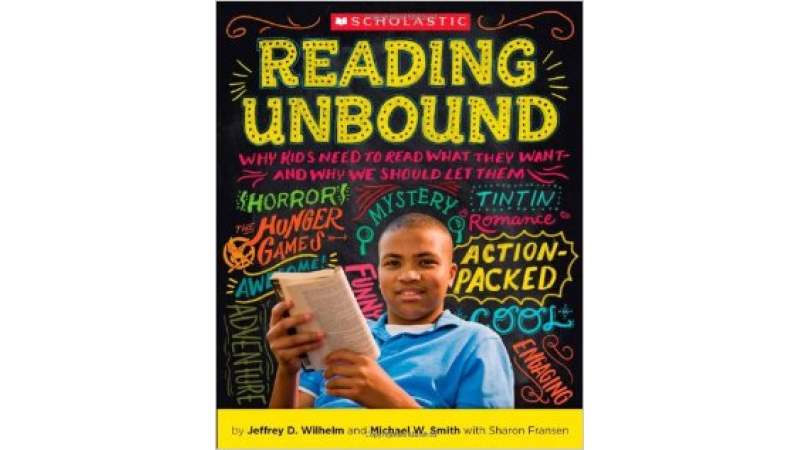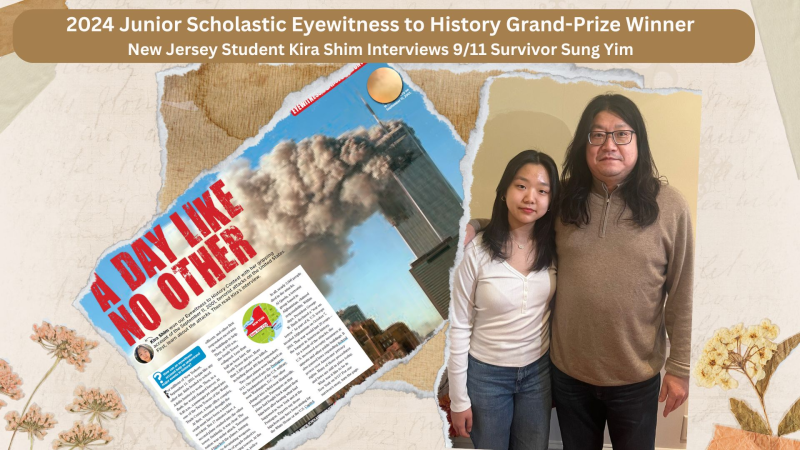In between teaching tours, I discovered librarianship. So there is a marked difference between how I taught before and after teen librarian-ing in a public library. Before librarian-ing I picked the books that we read in my tenth grade English class in Brooklyn, and they were some of my favorites – such as Annie John and Things Fall Apart. But after rediscovering the world of reading for pleasure, as a teen librarian, I returned to the English classroom in Albuquerque with a new perspective on choice and reading – and I was ready to experiment.
 Today’s Teacher Week presenter, Dr. Michael W. Smith, of Temple University, spoke about cultivating life-long readers. His breakdown of the four types of pleasure reading – play, work, intellectual, and social – resonate with all of us who consider ourselves bookworms. The challenge that he addressed is how we infuse the skills gained from reading for pleasure into the classroom, where so often there are preconceived notions of what students should be reading and learning, and inherent limits and expectations can dampen the fun. I struggled with this myself, as I returned to the role of literacy instructor after championing reading for fun as a teen librarian. I wanted to take lessons learned from librarianship, and apply them to the high school English classroom. Luckily I had been introduced to the American Association of School Librarians set of Standards for the 21st Century Learner in 2007, and they address the concepts of pleasure and wisdom that Michael White defined as essential to reading instruction. Here are some highlights of standard 4 – “Pursue personal and aesthetic growth.”
Today’s Teacher Week presenter, Dr. Michael W. Smith, of Temple University, spoke about cultivating life-long readers. His breakdown of the four types of pleasure reading – play, work, intellectual, and social – resonate with all of us who consider ourselves bookworms. The challenge that he addressed is how we infuse the skills gained from reading for pleasure into the classroom, where so often there are preconceived notions of what students should be reading and learning, and inherent limits and expectations can dampen the fun. I struggled with this myself, as I returned to the role of literacy instructor after championing reading for fun as a teen librarian. I wanted to take lessons learned from librarianship, and apply them to the high school English classroom. Luckily I had been introduced to the American Association of School Librarians set of Standards for the 21st Century Learner in 2007, and they address the concepts of pleasure and wisdom that Michael White defined as essential to reading instruction. Here are some highlights of standard 4 – “Pursue personal and aesthetic growth.”
- 4.1.1 Read, view, and listen for pleasure and personal growth.
- 4.2.2 Demonstrate motivation by seeking information to answer personal questions and interests, trying a variety of formats and genres, and displaying a willingness to go beyond academic requirements.
- 4.2.4 Show an appreciation for literature by electing to read for pleasure and expressing an interest in various literary genres.
As you can see, these are high expectations to set (in addition to conventional standards) while developing unit plans and curriculum; but the concept that came to the forefront for me those summer days of lesson planning for the fall was CHOICE. This past April, in the Journal of Adolescent and Adult Literacy article titled “Learning to Choose: the Hidden Art of the Enthusiastic Reader”, Margaret Mackey writes that “An independent reader, a reader likely to keep on reading for the pleasure of it, knows how to find something satisfying to read . But this skill is often not taught in schools; indeed, the very structure of many English classrooms eliminates all issues of choice from consideration.” She goes on to suggest introducing students to selection tools like book reviews, word of mouth, and social media, but her first two Steps for Immediate Action truly remind me of what I attempted to do in my classroom after working in a library:
- Try to ensure that students have the regular experience of choosing their own reading materials.
- Always make the act of choosing a part of how you talk about books in the classroom.
During the first quarter of that academic year we read one book together (Lord of the Flies), in order to begin thinking about our essential question for the term (dealing with man’s inhumanity to man). During the second quarter I employed a modified ‘forced choice activity’ , what Michael Smith referred to today as ‘microchoices’. His method, as I understand it, is to work from large essential questions and then have student pair the assigned reading with self-selected reading. My method, in that year, was to booktalk the five books that we would have potentially read over the remainder of the year and have students choose the one book that they would engage from the canon. The five choices were: Brave New World, 1984, Animal Farm, Heart of Darkness, and Kim; and I threw down the gauntlet, suggesting that someone read 1984 and Brave New World at the same time (three brilliant scholars rose to the occasion). Cooperative groups were then formed for the term based on the students’ reading selections/interests, rather than based on my assessment of their skill level or behavior. My mini-lesson in this workshop model focused on a reading skill, literary concept, or essential question, and each group would complete the assigned task for the day based on the book they were reading. Ultimately, at the end of the unit, each group performed a skit where they acted out the book for the rest of the class. And that was it. When we came back in January I collaborated with the 10th grade social studies teacher for the rest of the year on National History Day research and projects.
Don’t doubt it, this was hard for me! I was reading five books at the same time, and since each group set their own reading goals for the next day, I had five books with three bookmarks in each (one for each section that I taught) that I carried back and forth every night. I also gave up my opportunity to pontificate in the front of the room, delivering brilliant lectures and leading whole group discussions à la Dead Poets Society.
To make a long story short(er), the one group in three classes that picked Kim abandoned it after two weeks and moved on to Animal Farm, cooperative learning groups were a hit, and the video that I have from the skit that mashed up Brave New World and 1984 is priceless. If I had to do it all over again, I would incorporate Michael Smith’s paired reading method, then move on to free reading choice after forced. At the end of the year, I would go back to doing one book with the whole class, but have cooperative groups each teach one chapter of the book, as I did with Annie John in my Brooklyn classroom back in the day.
Whatever we do, we have to keep it interesting!
Many thanks to Dr. Smith for an inspirational hour today in the Scholastic auditorium.






